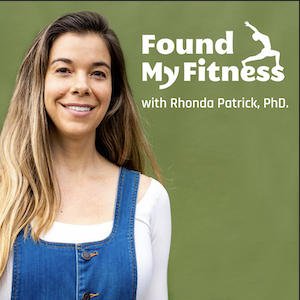#80 How Heat Therapy Improves Slow Wave Sleep
This episode is available in a convenient podcast format.
These episodes make great companion listening for a long drive.
The BDNF Protocol Guide
An essential checklist for cognitive longevity — filled with specific exercise, heat stress, and omega-3 protocols for boosting BDNF. Enter your email, and we'll deliver it straight to your inbox.
Heat therapy, such as using a sauna or soaking in a hot bath, may significantly improve your slow-wave sleep. This video delves into the fascinating intersection between exercise and passive body heating and elucidates how high energy expenditure exercise and heat exposure share nuanced mechanisms in sleep regulation.
In this short episode, I discuss the health benefits and practical implications of how heat therapy improves sleep quality, including...
-
Increasing pre-sleep tiredness
-
Effects of exercise
-
How the immune system regulates sleep
-
Hormonal effects of heat
-
Overlap in the brain (thermoregulation vs. sleep)
The surprising role of the immune system
The immune system plays a surprising role in regulating sleep through somnogenic cytokines, such as immune factors IL-1B and TNF-alpha, released in response to heat stress and exercise.
The interconnected nature of thermoregulation and sleep
Understanding how thermoregulation affects our sleep and vice versa is vital for a more comprehensive view of sleep health. The interconnected nature of thermoregulation and sleep, particularly in the brain, highlights the importance of overlapping sleep regulation and heat loss processes. Critical to these processes are heat-sensing neurons in the preoptic area of the hypothalamus, a region known to play a crucial role in sleep regulation.
The intricate, bidirectional relationship between growth hormone and slow-wave sleep
Most daily growth hormone secretion occurs during the initial phase of slow-wave sleep. Stimulants of slow-wave sleep, such as heat exposure, can enhance growth hormone secretion, establishing a robust connection between growth hormone and sleep regulation.
Heat's effects on growth hormone vary – from doubling after two 20-minute 80°C sauna sessions to soaring sixteen-fold after two one-hour sessions at the same temperature.
Translating sleep insights into practical steps
These findings highlight the possibility of using heat therapy or vigorous exercise to influence slow-wave sleep, drawing on the interplay between body temperature regulation, immunity, physical activity, and hormones. By better understanding these relationships and effectively leveraging them, we can enhance sleep quality and overall health and well-being.
Scientific research has identified many sauna and hot bath protocols
- Example sauna protocol: 20 minutes in a 176°F sauna, 1-2 hours before bedtime
- Example hot tub/bath protocol: 104.9°F for 20-30 minutes, 1-2 hours before bedtime
- Timing may also be essential to allow for cooling down afterward.
- Early evening, a couple of hours before bed, is probably optimal.
-
Introduction
-
Increasing pre-sleep tiredness
-
Effects of exercise
-
How the immune system regulates sleep
-
What heat and exercise have in common
-
Hormonal effects of heat
-
Growth hormone
-
Prolactin and sleep onset
-
Effect of sexual activity
-
Overlap in the brain (thermoregulation vs. sleep)
-
Heat protocols and tactics
Attend Monthly Q&As with Rhonda
Support our work

The FoundMyFitness Q&A happens monthly for premium members. Attend live or listen in our exclusive member-only podcast The Aliquot.























































































